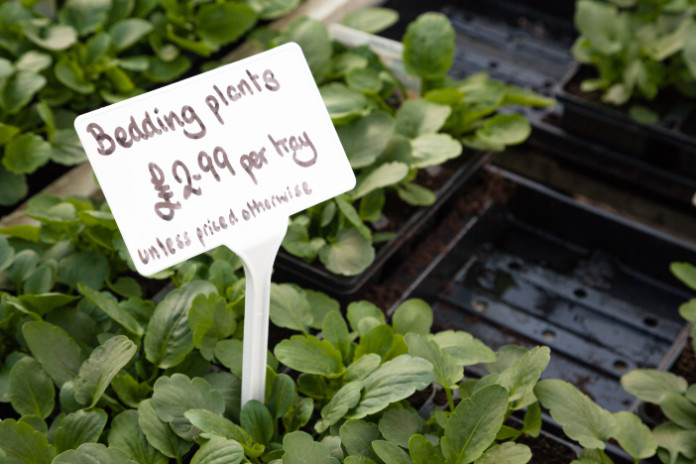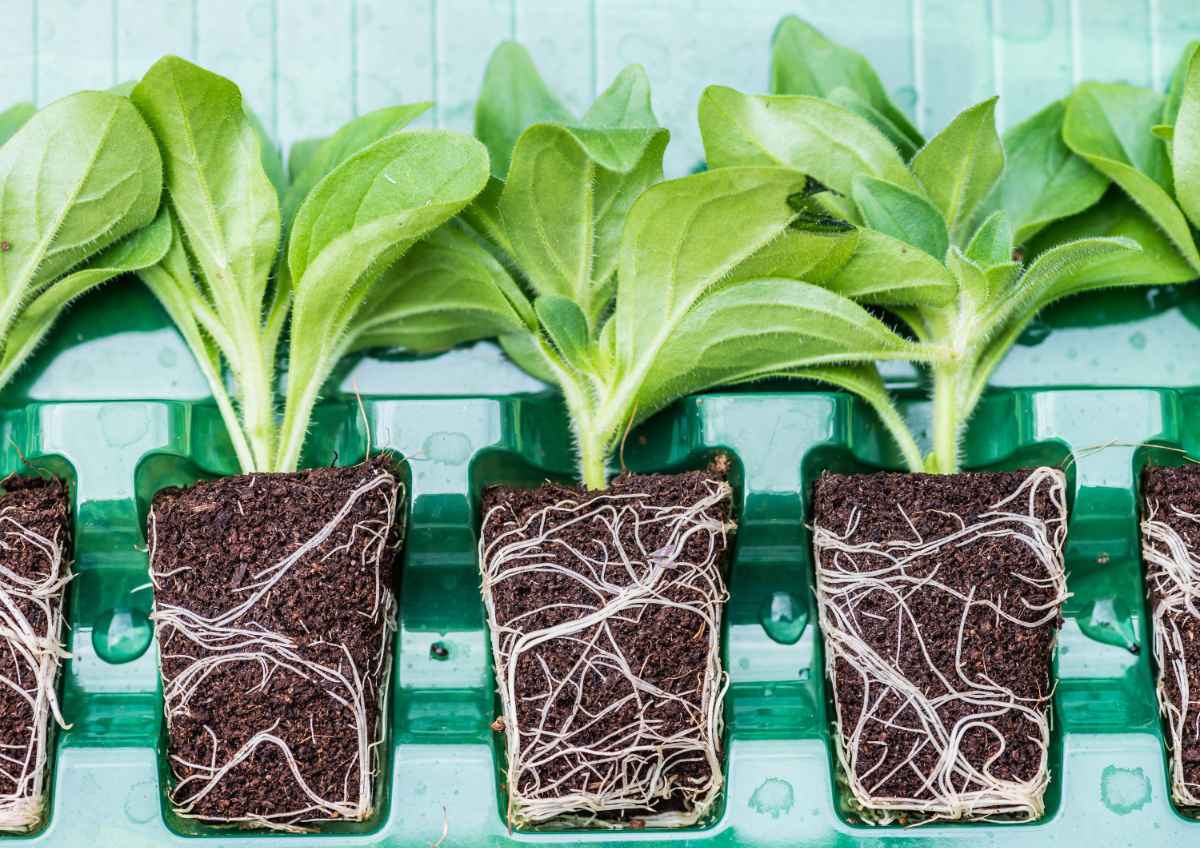If you don’t have time, space or the equipment to sow seeds this spring, there’s still time to buy plug plants that could cost you far less than the more mature versions you’d be buying in early summer.
What are plug plants?
Plug plants are essentially mini-plants grown in their own cell and are smaller than the pots of bedding you can buy later in the season.
View this post on Instagram
While the last chance to buy summer bedding as plugs is generally the end of April, some more tender vegetable plugs are sent out later, to be planted in the ground or in containers soon after arriving.

You’ll still need to have a place indoors to put tender annuals while they are growing, but you won’t have to invest in seed trays or fine seed compost because you’ve already had a head start.
If you have a frost-free greenhouse or enough space indoors, you could start planting up hanging baskets and containers with plug plants, giving them plenty of room to develop and put down new roots, but these plants are like babies, so they will need some TLC and gentle handling before you place them outside when all danger of frost has passed.
Digitalis Dalmatian (Foxglove) Jumbo Starter Plants.Uniform, compact foliage and well-branched habit produce plants with superb flower spikes. Final Height: 80-110cm Position: Partial Sun Flowering: Jun-Aug https://t.co/pEJRybx9QS #Plants #gardening #perenials #Gardens pic.twitter.com/3fH5lROmgf
— WonderPlants (@WonderPlants) April 22, 2018
What are the advantages of plug plants?
They are less fiddly than seeds
Plug plants arrive in their own ‘cell’ of soil and take away the hassle of thinning out seedlings from trays and the often very careful transplanting required to pot them on. The plants risk less root disturbance – which can interrupt growth – as you already have an individual plant, which you’ll just need to transfer into a larger pot when you receive it.
Wonder Plants are continuing with their weekly despatches of Starter plants and Plug Plants. Only £4.50 for 20 plug plants or £3.75 for 3 starter plants. Large variety of patio, basket, perennial and bedding plants. Order today for despatch next week. https://t.co/4PW4RSuGt9. pic.twitter.com/hGGCJclyVJ
— WonderPlants (@WonderPlants) March 12, 2019
Plug plants are cheaper than more mature versions
They can cost around half the price of more mature plants later on in the season – both from online suppliers and garden centres. “Plug plant sizes vary dramatically but most of ours are about 6cm. Our ‘Teen’ range, most of which are raised from cuttings and are true to type, are 9cm,” says Marcus Eyles, horticultural director of Dobbies Garden Centres (dobbies.com). “The ‘teen’ range is £2.49 each and five plants for £10. If you bought these plants later in the season at a larger size, they would cost from £5 to £10 each.”
You can even buy houseplants as plugs for less than a more mature specimen would cost and nurture them yourself.
View this post on Instagram
You may not want too many plants
If you grow from seed, you may well end up throwing quite a few plants away as you find you don’t have room for all the seedlings. Vegetable plug plants, in particular, are great if you only want a few of a particular vegetable, as you can pick and choose. A packet of tomato or chilli seeds, for instance, is likely to produce far too many plants for the average garden.
“If people want to buy plug plants, I would recommend almost any vegetable actually including beetroot and salad onions,” says gardening expert, author and YouTuber Charles Dowding (charlesdowding.co.uk), who gives talks and runs gardening courses. “I use Delfland Nurseries (organicplants.co.uk). Because they are organic, the plants tend to be smaller but also much stronger.
“Sometimes large and lush plants – which look great at point of purchase – do nothing but decline for a while until they recover from being in the new and more challenging conditions.”
View this post on Instagram
Some plants are difficult to grow from seed
“Begonias, bacopa, nemesia, osteospermum, verbena and lobelia are all more difficult plants to propagate and take time, therefore buying them when they have already been raised on to young plants will give you a head start for the season, plus could save time spent if unsuccessful in propagating from cuttings or seeds,” Eyles advises.
Others that can be difficult or take a long time to grow from seed include geraniums, begonias and dianthus. Dowding adds: “Good veg to buy [as plugs] are aubergines, chilli, pepper, celery, celeriac, grafted tomatoes, perhaps cucumber and melon too.”
View this post on Instagram
How much care will plug plants need?
“These are young plants, and we can still experience cold weather and frosts until May, so some TLC is required to grow them on,” says Eyles. “Plant into larger pots and place in a greenhouse, grow house, conservatory, or windowsill with lots of natural light. Make sure the temperature stays above 14 degrees C.
“In the same way that you would if growing from seed, you’ll need to get them used to colder temperatures, hardening them off in a cold frame over a period of seven to 10 days, moving them outside once the risk of frosts has passed. Water carefully, ensuring not to overwater.”
Best-selling plug plants
Stuck for inspiration? Check out our list of best-selling Amazon products!
No products found.
You may be interested in…
This article may include affiliate links to products and services where we may receive a small fee to support the running of this site if you make a purchase or is a sponsored article from one of our select editorial partners providing valuable advice and information to our readers.































































